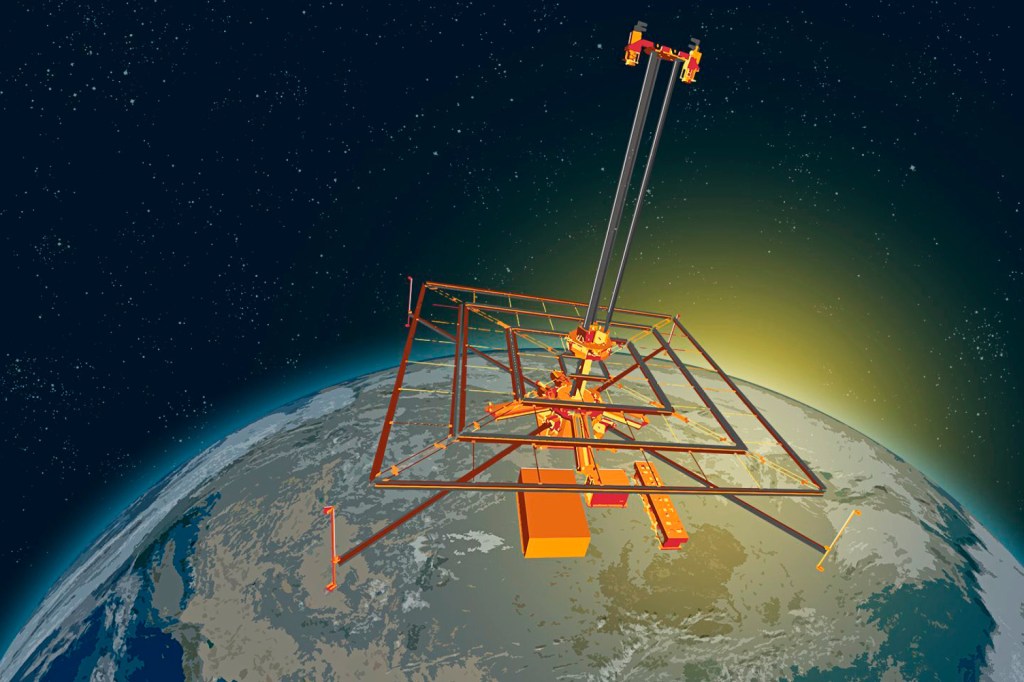Drones in Space

In 2005, scientists saw close-up pictures of Titan, Saturn’s largest moon. The pictures were snapped by a space probe. They showed mountains and dunes
dune
 TINA TERRAS & MICHAEL WALTER—GETTY IMAGES
a hill of sand formed by wind
(noun)
We played on the sand dunes at the beach.
. There were riverbeds and lakes, too. That got scientists excited. Where there’s liquid, there could be life.
TINA TERRAS & MICHAEL WALTER—GETTY IMAGES
a hill of sand formed by wind
(noun)
We played on the sand dunes at the beach.
. There were riverbeds and lakes, too. That got scientists excited. Where there’s liquid, there could be life.
“It was spectacular to see familiar terrain
terrain
 TINA TERRAS & MICHAEL WALTER—GETTY IMAGES
a piece of land
(noun)
We hiked over rocky terrain.
on a different world,” Elizabeth Turtle told TIME for Kids. Turtle is a scientist at the Johns Hopkins Applied Physics Laboratory, in Maryland. “The processes that shape Titan’s landscape are similar to those that shaped Earth’s.”
TINA TERRAS & MICHAEL WALTER—GETTY IMAGES
a piece of land
(noun)
We hiked over rocky terrain.
on a different world,” Elizabeth Turtle told TIME for Kids. Turtle is a scientist at the Johns Hopkins Applied Physics Laboratory, in Maryland. “The processes that shape Titan’s landscape are similar to those that shaped Earth’s.”
Titan could hold clues to how life began on Earth. An organic
organic
 JENNY DETTRICK—GETTY IMAGES
containing chemicals necessary for life
(adjective)
Banana peels and other organic materials can be turned into compost.
material drops like snow from its atmosphere. The material collects in dunes. Its chemicals mix with liquids on Titan. This is like what happened on Earth 4 billion years ago. That’s when the first life-forms appeared here.
JENNY DETTRICK—GETTY IMAGES
containing chemicals necessary for life
(adjective)
Banana peels and other organic materials can be turned into compost.
material drops like snow from its atmosphere. The material collects in dunes. Its chemicals mix with liquids on Titan. This is like what happened on Earth 4 billion years ago. That’s when the first life-forms appeared here.
Until now, NASA has used wheeled rovers to study other planets. This summer, NASA agreed to pay for Turtle’s team to build a dronelike
drone
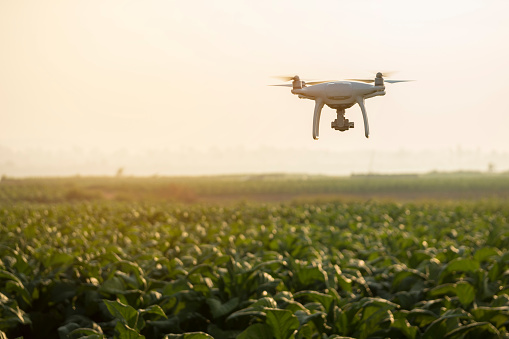 MR.KITSADAKRON PONGHA/EYEEM—GETTY IMAGES
an unmanned craft guided by remote control
(noun)
Weather drones fly into nature’s most powerful storms to gather information.
craft. It’s called Dragonfly. It will be among the first flying machines used to explore other worlds.
MR.KITSADAKRON PONGHA/EYEEM—GETTY IMAGES
an unmanned craft guided by remote control
(noun)
Weather drones fly into nature’s most powerful storms to gather information.
craft. It’s called Dragonfly. It will be among the first flying machines used to explore other worlds.
“This mission would have been unthinkable a few years ago,” said NASA administrator Jim Bridenstine. “But we’re ready now for Dragonfly’s amazing flight.”
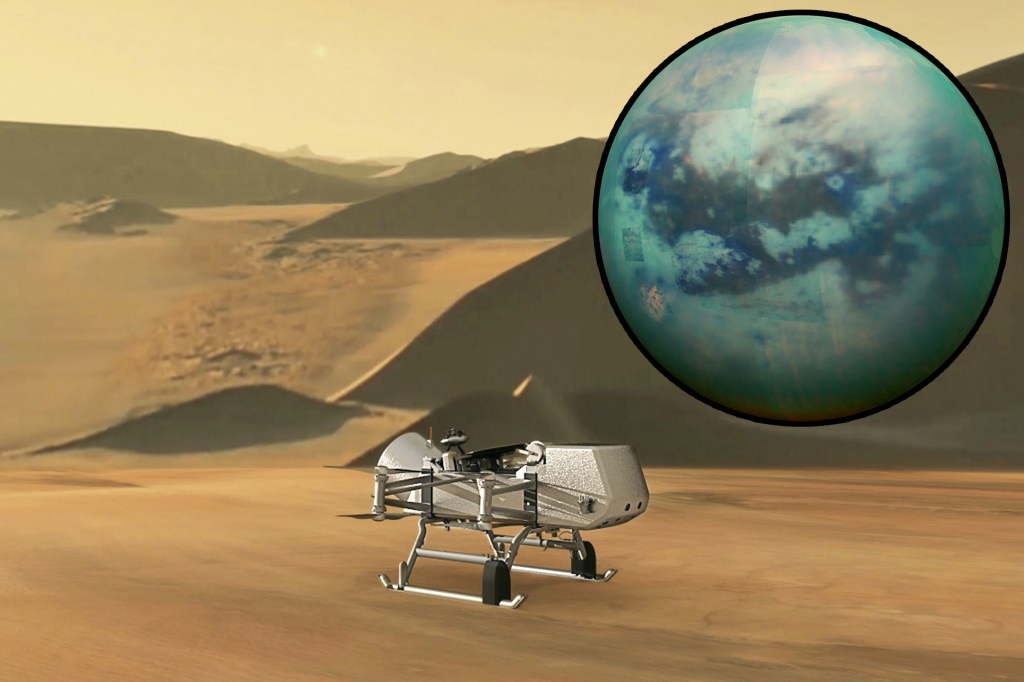
OVER THE MOON In this illustration, Dragonfly hovers above the dunes of Titan, Saturn’s largest moon. In the view of Titan from space (right), dune-filled regions form a sideways letter H.
FROM LEFT: NASA/JHU-APL;NASA/JPL/UNIVERSITY OF ARIZONA/UNIVERSITY OF IDAHOTaking Flight
Dragonfly will launch in 2026. It will land on Titan in 2034. The craft will have cameras, drills, and a device to suck up materials. It will gather samples for two years and send data back to Earth.
Flying is easy on Titan. The moon has a thick atmosphere and low gravity. A person who went there would be able to strap on wings and fly. “You’d need something to keep you warm,” says Turtle. The temperature on Titan is minus 290°F.
The project is a big step forward for NASA, Turtle says. “We get to bring a whole new dimension—flight—to exploring another world.”

TWO-IN-ONE This model of the Shapeshifter robot rolls, to save energy. Then it separates into two flying drones when it’s time to explore uneven surfaces.
NASA/JPL-CALTECHShape of the Future?
Scientists at NASA’s Jet Propulsion Laboratory, in California, are testing a robot called Shapeshifter. It looks like a hamster wheel. On Titan, it will roll along until it comes to an obstacle, such as a mountain. Then it will split into two drones. They’ll fly around and gather data. Then they’ll reconnect on the other side.
“Most of the interesting places to study are not on flat surfaces,” says researcher Ali Agha. “They’re on cliff walls, or in caves and potholes.”
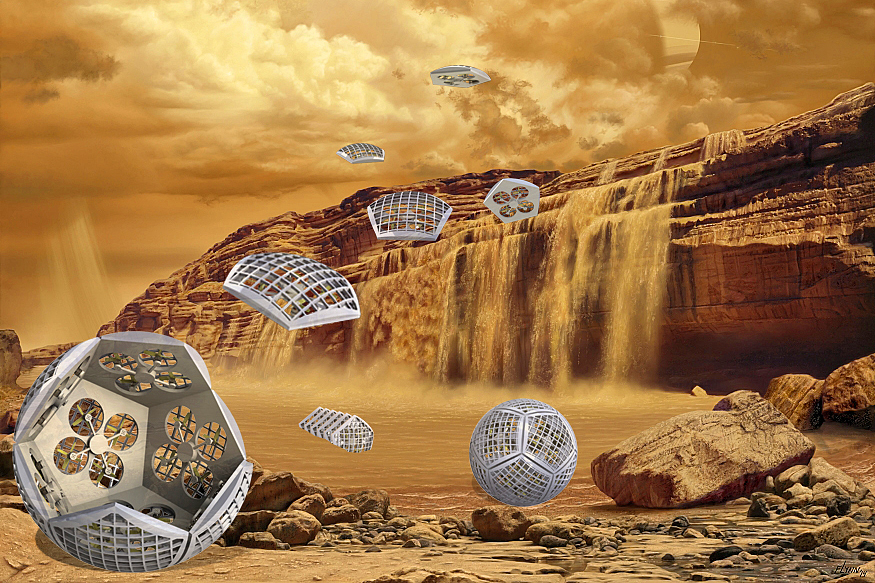
SHAPESHIFTER This illustration imagines a set of drones that can fly independently, come together into a ball, or form a chain for exploring caves.
MARILYNN FLYNN—NASA/JPL-CALTECHAgha imagines a Shapeshifter made of 12 drones. They’ll be able to form a ball, or a chain for exploring caves. They’ll go underwater, too. We can’t know for sure where we’ll find signs of life on Titan,” Agha says. “When you’re dealing with unknown environments, you need to be versatile
versatile
 PLUME CREATIVE—GETTY IMAGES
suitable for many different purposes or tasks
(adjective)
My black dress is versatile because I can wear it for many different occasions.
.”
PLUME CREATIVE—GETTY IMAGES
suitable for many different purposes or tasks
(adjective)
My black dress is versatile because I can wear it for many different occasions.
.”
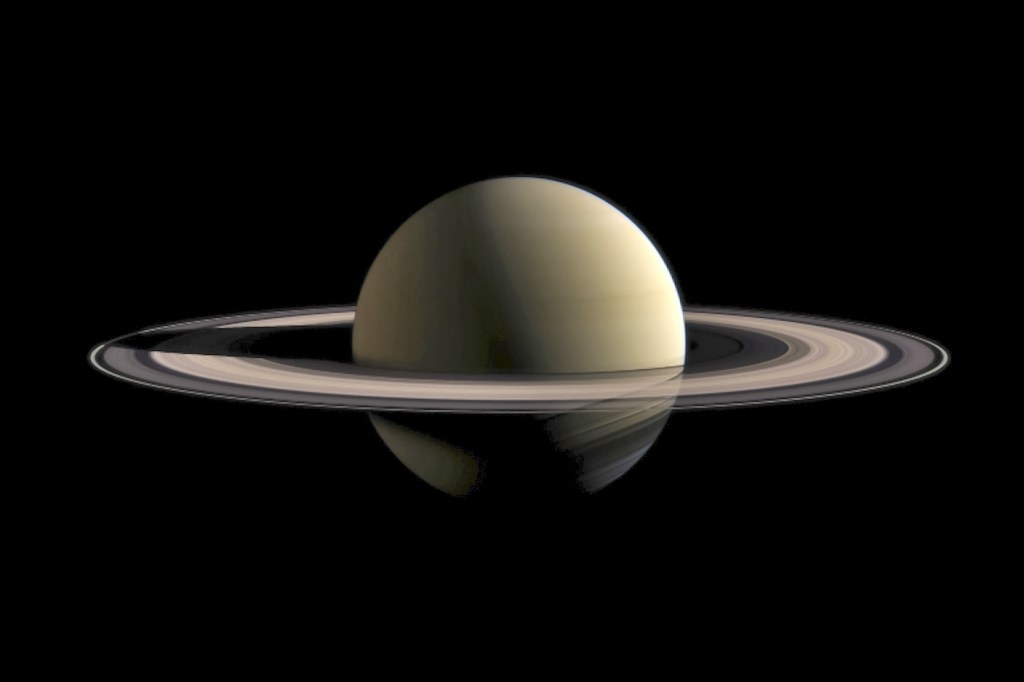
Saturn Stats
Titan is not Saturn’s only moon. The planet could have as many as 82 moons. Here are other facts to know:
Saturn is the second-largest planet in the solar system. You could fit 764 Earths inside Saturn.
The planet’s rings are made of chunks of rock and ice.
Saturn is the sixth planet from the sun. It’s about 900 million miles away from the sun.
It takes Saturn 29 years to complete one orbit around the sun. That makes its year equal to 29 years on Earth.
Looking for the cover quiz? After you sign in, click on the Resources tab to search Teaching Resources for printable versions of all our quizzes.





